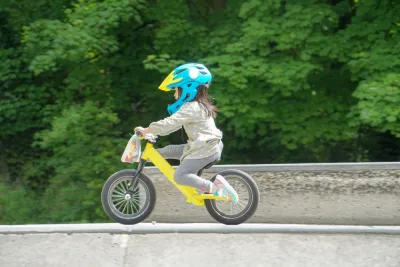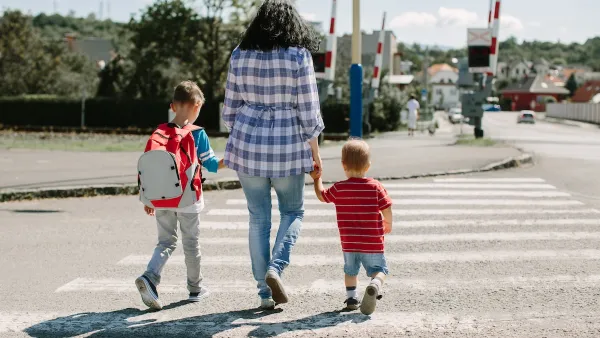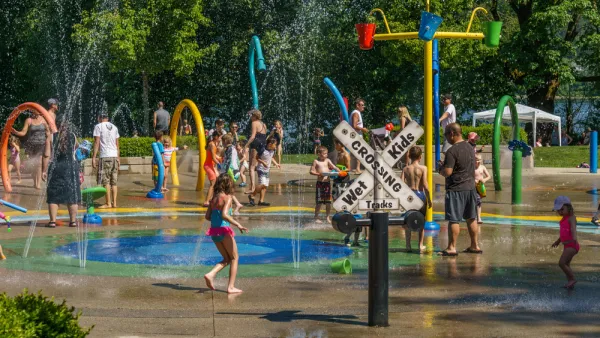Designing neighborhoods with children in mind could reduce traffic fatalities and improve the health and well-being of kids.

"Kids today aren’t lazy," argues Scott Berson. "They aren’t addicted to screens, at least not any more than adults. But the way we’ve built our modern environment restricts, with almost authoritarian precision, the ability of kids to do anything independently — including play outside."
Berson argues that our built environment traps kids in car-dependent, sedentary lifestyles, "About 52% of families say they live in suburbs, though this definition is a little hazy. Let’s think of the suburb as a car-focused area, usually on the outskirts of a larger city, with houses separated from offices separated from stores by miles and miles of roads. There are few sidewalks, and few bike trails or lanes. There is no real bus or transit system." These environments, Berson says, are "agonizingly boring to kids — and an area in which it is impossible for them to act on their need to 'try out' independence as they get older." It's impossible to exercise independence in "an environment designed to be driven and only to be driven." Meanwhile, despite the perception of suburban safety, "[t]raffic deaths — and child fatalities — are far more common in suburbs than in cities."
Berson believes "[w]e need to think of kids as full members of society and we need to design our neighborhoods for kids to have full, rich childhoods that let them grow into well-rounded members of our communities." He recommends three "simple to remember, but agonizingly difficult to implement" actions: "Connect the streets, mix the uses, and shrink the schools." Berson describes steps that cities can take to work toward these goals. "It will take creative thinkers and public leaders across the nation to begin to see the harm the environment we’ve built is doing to kids, and it will take bravery to implement even small changes."
FULL STORY: Op-Ed: Why Bad City Design is Failing Our Kids (And What to Do About It)

National Parks Layoffs Will Cause Communities to Lose Billions
Thousands of essential park workers were laid off this week, just before the busy spring break season.

Retro-silient?: America’s First “Eco-burb,” The Woodlands Turns 50
A master-planned community north of Houston offers lessons on green infrastructure and resilient design, but falls short of its founder’s lofty affordability and walkability goals.

Delivering for America Plan Will Downgrade Mail Service in at Least 49.5 Percent of Zip Codes
Republican and Democrat lawmakers criticize the plan for its disproportionate negative impact on rural communities.

Test News Post 1
This is a summary

Test News Headline 46
Test for the image on the front page.

Balancing Bombs and Butterflies: How the National Guard Protects a Rare Species
The National Guard at Fort Indiantown Gap uses GIS technology and land management strategies to balance military training with conservation efforts, ensuring the survival of the rare eastern regal fritillary butterfly.
Urban Design for Planners 1: Software Tools
This six-course series explores essential urban design concepts using open source software and equips planners with the tools they need to participate fully in the urban design process.
Planning for Universal Design
Learn the tools for implementing Universal Design in planning regulations.
EMC Planning Group, Inc.
Planetizen
Planetizen
Mpact (formerly Rail~Volution)
Great Falls Development Authority, Inc.
HUDs Office of Policy Development and Research
NYU Wagner Graduate School of Public Service





























